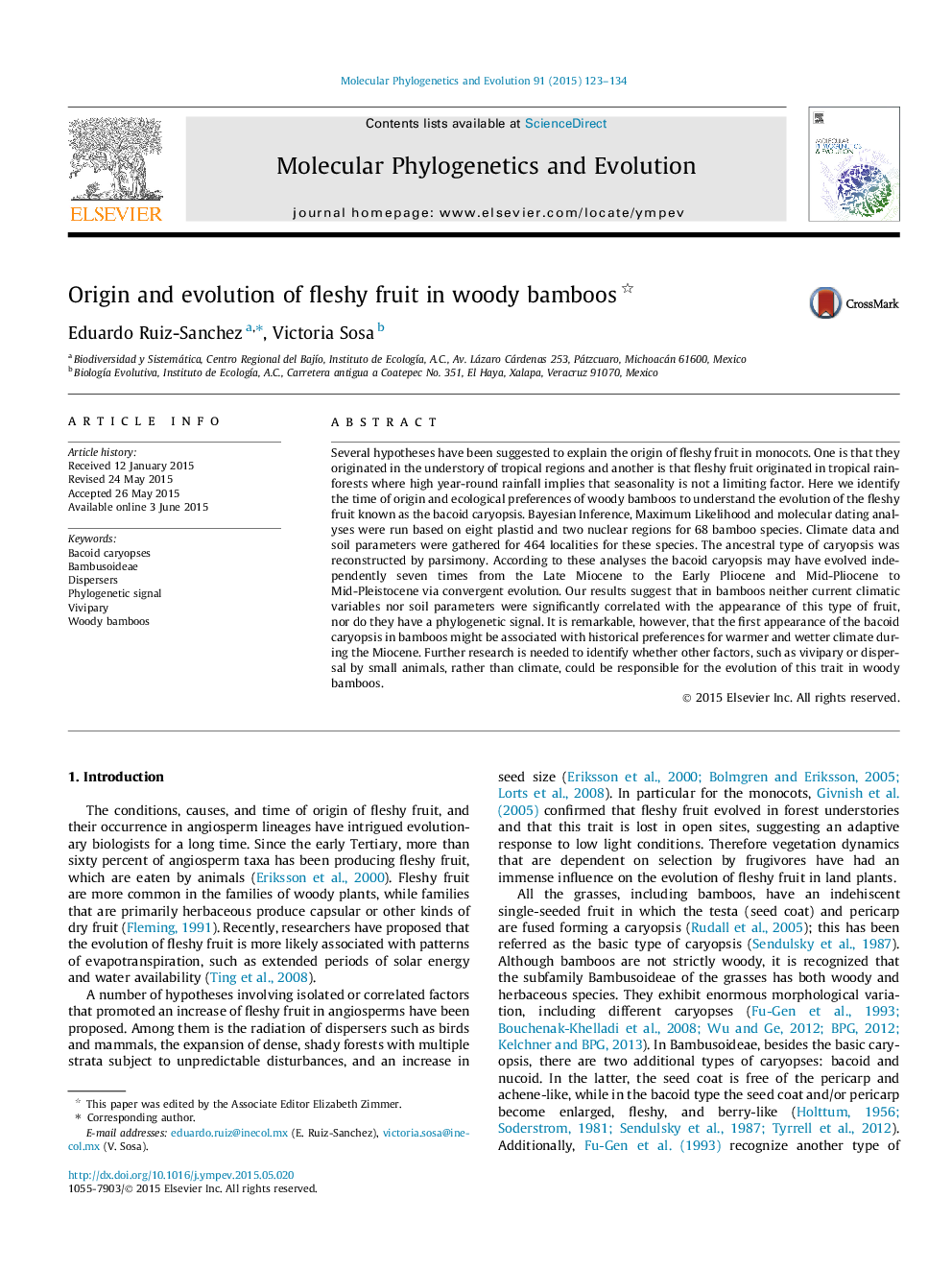| کد مقاله | کد نشریه | سال انتشار | مقاله انگلیسی | نسخه تمام متن |
|---|---|---|---|---|
| 2833784 | 1570805 | 2015 | 12 صفحه PDF | دانلود رایگان |
• Bacoid caryopses have evolved independently at least seven times in woody bamboos.
• This fruit type first appeared during Late Miocene.
• Actual climate variables were not correlated with the occurrence of bacoid caryopsis.
• Bacoid caryopses evolved via convergent evolution.
Several hypotheses have been suggested to explain the origin of fleshy fruit in monocots. One is that they originated in the understory of tropical regions and another is that fleshy fruit originated in tropical rainforests where high year-round rainfall implies that seasonality is not a limiting factor. Here we identify the time of origin and ecological preferences of woody bamboos to understand the evolution of the fleshy fruit known as the bacoid caryopsis. Bayesian Inference, Maximum Likelihood and molecular dating analyses were run based on eight plastid and two nuclear regions for 68 bamboo species. Climate data and soil parameters were gathered for 464 localities for these species. The ancestral type of caryopsis was reconstructed by parsimony. According to these analyses the bacoid caryopsis may have evolved independently seven times from the Late Miocene to the Early Pliocene and Mid-Pliocene to Mid-Pleistocene via convergent evolution. Our results suggest that in bamboos neither current climatic variables nor soil parameters were significantly correlated with the appearance of this type of fruit, nor do they have a phylogenetic signal. It is remarkable, however, that the first appearance of the bacoid caryopsis in bamboos might be associated with historical preferences for warmer and wetter climate during the Miocene. Further research is needed to identify whether other factors, such as vivipary or dispersal by small animals, rather than climate, could be responsible for the evolution of this trait in woody bamboos.
Figure optionsDownload as PowerPoint slide
Journal: Molecular Phylogenetics and Evolution - Volume 91, October 2015, Pages 123–134
